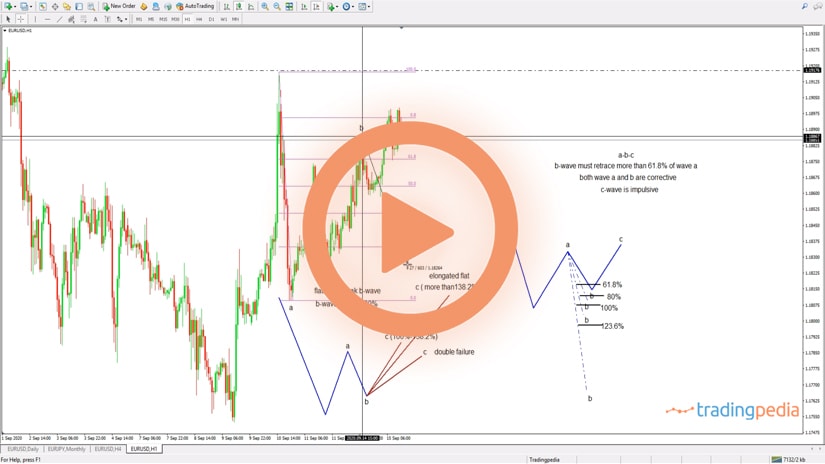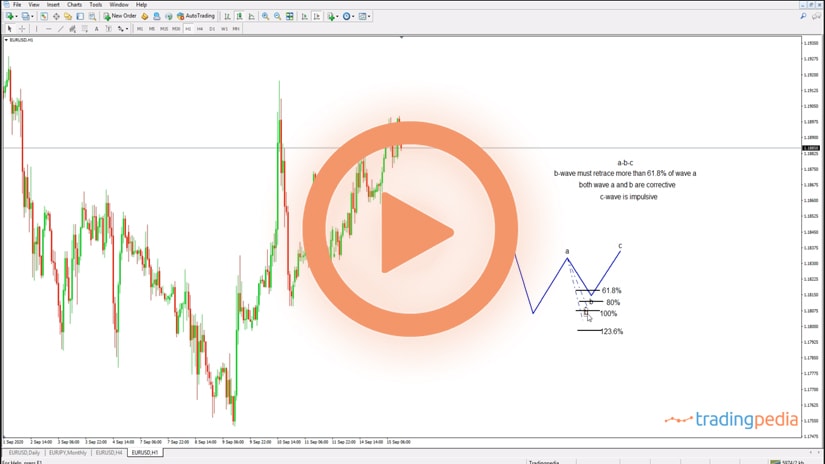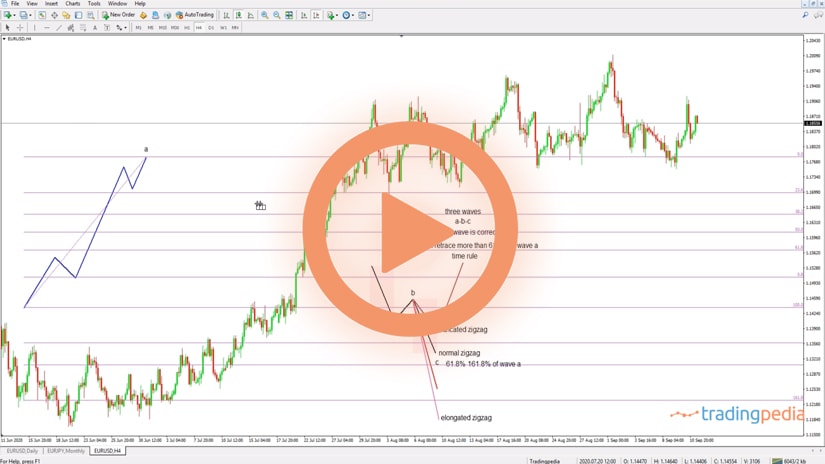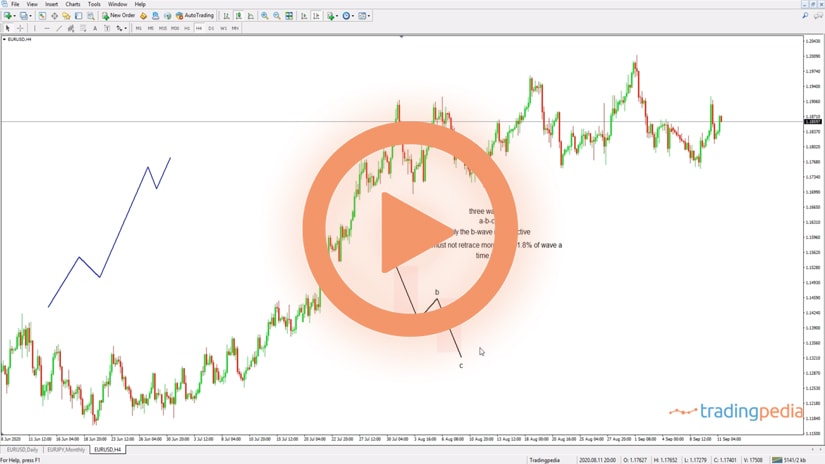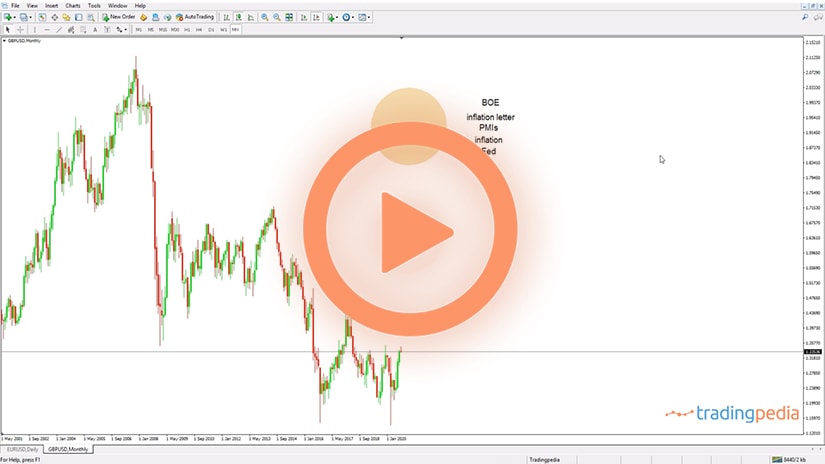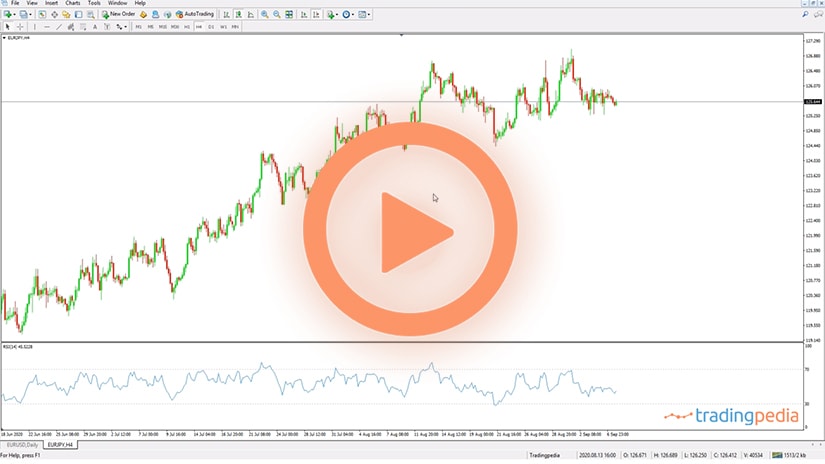
Hello there, this is tradingpedia.com and this video deals with the Elliott Waves Theory, as we introduce another term called a first wave extension impulsive move. Remember that impulsive waves are of three types – 3rd wave extension, the most common one, 1st wave extension, and 5th wave extension.
Impulsive Waves Rules
Let’s review the rules of an impulsive wave – all the waves are labeled with numbers, the 1st, 3rd and 5th are motive waves or impulsive waves on their own, the 2nd and the 4th waves are corrective waves and there is no overlapping between the corrective waves. There is also the principle of alternation between the corrective waves, saying that they should be different, and the third wave should not be the shortest.
All these rules must be respected on all types of impulsive waves, so on the first wave extensions too.
The first wave extension is not the most common impulsive wave, but the second most common after the third wave extension. Naturally, the first wave is the longest and the third wave should not be the shortest, so the fifth wave must be the shortest.
If we consider a rising market, this would be our first wave, the longest segment. And then the market forms a second wave that does not retrace beyond the start of the impulsive move. Next, the market advances with a third wave which should not be the shortest when compared with the other motive waves (the first and the fifth). Moving forward, the market forms the fourth wave, which should not overlap with the second wave. Overlapping refers to all parts of a wave. For instance, if the second wave has a flat with a strong b-wave, if the b-wave enters the 4th wave territory invalidates the entire impulsive wave.
The fifth wave must be the shortest in the pattern. If you want, it resembles a rising wedge, a classic technical analysis pattern.
All the other rules of an impulsive wave are respected. We talk about the 0-2 trendline and the fact that no parts of the first and the third wave should break this trendline.
The 2-4 Trendline
We also talk about the 2-4 trendline, as no parts of the third wave should break it. Moreover, when the fifth wave breaks the 2-4 trendline, it must do that in less than the time it took the fifth wave to form. All these are things to consider when trading a first wave extension impulsive wave.
This is the GBPUSD recent price action during the coronavirus pandemic – the deep lower when the USD liquidity shrank and then the comeback. We can say that this would be the first wave. Where to put the second wave? If we put it here, it would be incorrect because the upcoming 0-2 trendline would be pierced by parts of the third wave, which is not possible. Hence, we should focus on the next swing.
The third wave helps defining the extension – 161.8% when compared with the next longest wave, the third wave. We must measure 161.8% of the third wave and project it over the first wave. The first wave must exceed this length.
Related Videos
An Example
Let’s apply this rule and we project it over the first wave, we see that in this arrangement there is no extension. Therefore, the count is not correct. Well, if that is not the end of the second wave, this one here should be. Which makes the 0-2 trendline looking like this. But it is being pierced! No problem, because the 0-2 trendline must not be pierced by parts of the 1st wave or 3rd wave, which is correct in this arrangement.
All we have to do now is to measure the length of the third wave to find out 161,8% and to check the extension and project it over the first wave. Is the first wave longer? Yes. Therefore, this is a viable place for 1-2-3-4-5. We see no overlapping and if we draw the 2-4 trendline we see that the market broke it in less than the time it took for the fifth wave to form.
The entire move from here to here looks like a first wave extension that respect all the rules of an impulsive wave. Moving forward, an Elliott trader’s job is to find where this first wave extension fits and to put it on the bigger picture, in the context of a top-down analysis.
Thank you and bye bye.
